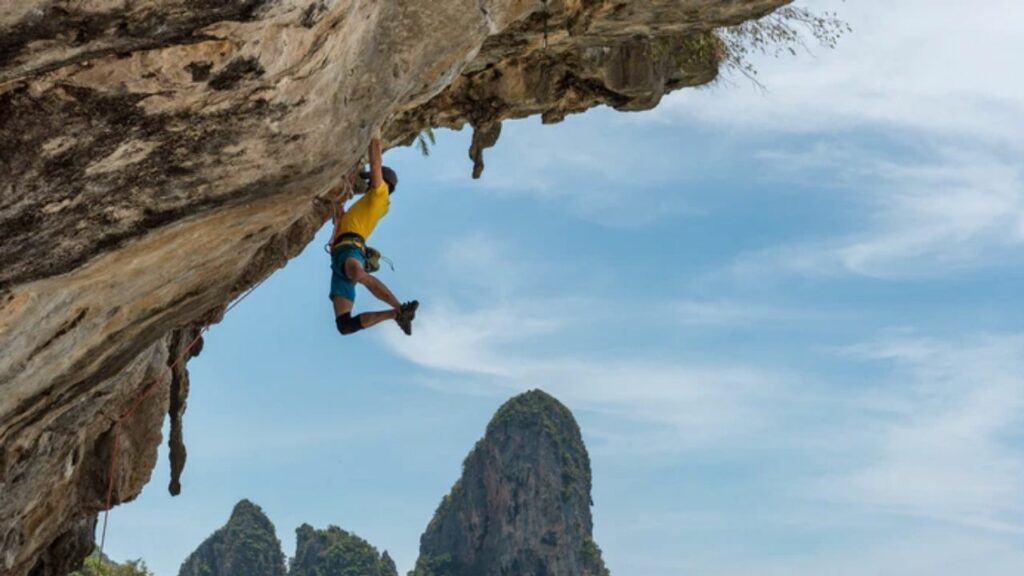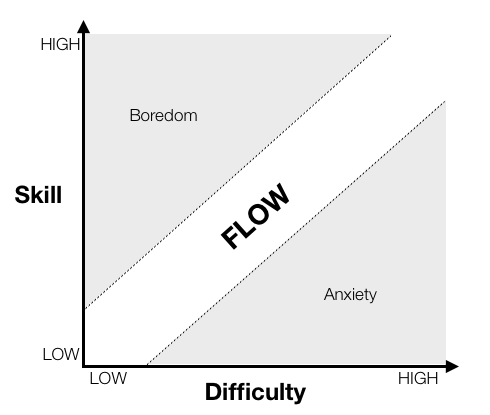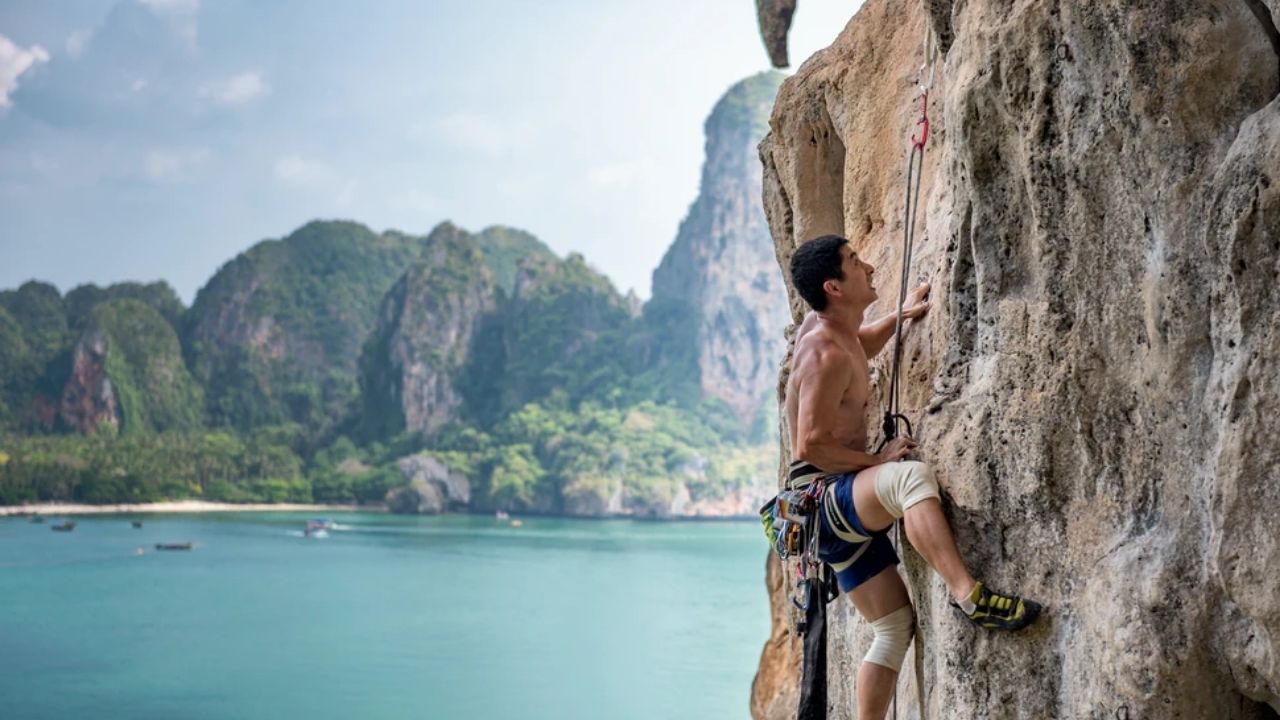Imagine being able to let go and climb freely with seamless moves like the ones we see on YouTube – even if it’s just for a few moments. Enter the “flow state” or the act of “being in the zone.”
It has many names, but the idea is relatively simple – it’s when your body automatically phases out the “noise” and gives 100% concentration and “processing power” to the task at hand.
Sounds too good to be true? Well, it’s not. And today, I’m gonna tell you how to achieve that powerful state of flow and mindfulness while climbing.
Firstly, the flow state is not some cosmic phenomenon that requires you to be exceptional at climbing to tap into it. Anyone can do it if they love the sport, are somewhat good at it and know the basics of flow experiences.
What do you need to know about Flow State?
The flow state is more or less a scientific phenomenon with debates on both ends of the spectrum. While it lacks experimental data since it’s an arbitrary concept, we have more than enough examples to know it exists.
You have undoubtedly heard of it if you’re a sports fan. It’s what us athletes call “being in the zone” or what musicians refer to as “aesthetic rapture.” The earliest documentation goes as far as into the religious texts – “the state of ecstasy.”
In layman’s terms, the flow state or “flow experiences” is a state of mind when you’re completely immersed in an ongoing task. It almost seems like meditation – you can feel the air touching your skin and do the task without any doubt and with a feeling of absolute contentness.
It’s not the traditional state of “happiness” that we think of when external factors are at play or something amazing has just happened. Instead, you could call it a pseudo-trance state where you’re completely satisfied with what you’re doing without room for improvement.
Finding Flow State Through Climbing
Finding the flow state with climbing is no different from experiencing “flow” in any other activity. All the basic norms about meditation, imagination, and conviction apply here as well.
Follow these steps / tips to achieve flow state in climbing:
Visualize the Flow
You can’t reach the destination by just focusing on the destination. Visualizing your journey takes priority. Think about how you are going to solve this problem.
Of course, it’ll take time to get better. Still, with enough “flow experiences,” your body and mind will be in complete sync, and you’ll do exactly as you visualized it.
Set a Difficult Goal
What’s more fun – walking downhill or skiing? Skiing, duh. You won’t achieve the ecstatic “flow state” by trying to do something mundane.
I’ll discuss this in detail in the next section.
Tame the fear
Fear is not all bad, and there’s no one single fear when it comes to falling. There’s the fear of failure, the fear of falling down and hurting yourself, and the fear of being self-conscious.
Learn to tame all these fears. Some are essential, of course, like fear of falling to a limited extent will elevate your performance by forcing you to make better decisions quickly.
That’s where the third tip, meditation, comes into play. It’s the best way to strengthen your mind. In fact, tai chi – the meditation in motion, is excellent for inducing a flow state.

Enjoy the Moment
Finally, the most important aspect – let go and enjoy. You’re doing what you love – nothing else should take priority at that particular moment. Once you have trained your mind and body enough and learned to let go, the flow state will become second nature to you.
Determining Your Climbing Grade Is Crucial
Without going too much into detail, the climbing grades in the Yosemite system go from 1 to 5. While 1 through 4 are for hiking and other activities, the 5’s are for rock climbing. It is further subclassified into 5.0 to 5.13, with the latter being the hardest.
Climbing grades or the “difficulty of the route” plays an important role. So, know your climbing grade to achieve a stable flow state. For example, suppose your current skill level is somewhere around 5.7 and 5.8.
If you try climbing a 5.5, you won’t achieve the flow because it doesn’t push you towards the edge. It doesn’t require literally every ounce of your focus and physical being to solve the route. There’s simply no fun in it.
Likewise, you’ll get the same result if you try a 5.11 or a 5.12 route. Yes, it’s hard and requires your utmost focus. But it’s so far above your level that it’s more frustrating than fun.

5.9. That’s the perfect number. And if you’re good with 5.8 routes, 5.9 is simply the next logical grade. It’s above your current skill level, just enough to force you to give your all. But it’s not outright impossible. After a few acceptable slip-ups, if you still have the will to continue and enjoy the route, you’ll get your flow state.
Check out Mark Rober’s Super Mario Effect, which explains this phenomenon exceptionally well.
Enhancing Flow State Through Other Activities
Even if climbing is your end goal, you can take part in other activities to enhance the stability and occurrences of your flow state. Think of it as practice for tapping into the flow state quickly.
For that, you’ll need to find an activity that you love and is immersive enough to phase out literally everything else. Some people find video games and even writing excellent for inducing a flow state – it just depends on your cup of tea.
I prefer swimming myself. You need practice to get good at it, and it’s very immersive. When you’re in the water, you can quickly remove the outside noise and be one with the experience. Cycling, running, cooking, baking, and many more – basically any activity that doesn’t require many people and you absolutely love.
And if you want a partner, try badminton, ping pong, and tennis if you can find someone with the same skill set. Have you ever experienced a play that never stops, the shuttlecock (or tennis ball) that keeps going from left court to right without dropping down?
That’s the flow state. Once you experience it a few times, it’ll be easier to induce it during intense activities like rock climbing. Remember that it’s all about imagination and meditation – your ability to immerse yourself in the activity and phase the world out.
Why is the flow state so important?
It’s a question I’ve pondered for a while – is tapping into the flow state really that important? Why not just practice, get good at the sport, and do it?
Ironically, that’s what flow is about. Flow state is not about the destination but the journey that leads to it. By practicing wholeheartedly and loving the sport itself, you’re able to achieve this amazing state where you can truly enjoy the fruits of your efforts.
And, of course, being in the zone can exponentially increase your progress in climbing or any other activity.
All the obstacles that were “hard” in the past will look like child’s play. You can now breeze through them and climb the wall or rock with beautiful and precise moves, almost like you’re dancing.
This is what it looks like:
Benefits of Achieving Flow State in Climbing
Zenhabits describes true productivity as the one where you achieve your major goals (like climbing a 5.7 or 5.8) rather than ticking off 5.5 and 5.6 problems daily.
Once you’ve achieved true productivity and learned the importance and happiness of finishing such tasks, you’ll always enjoy them. It wouldn’t matter what others are doing because you’ll be fully immersed in what’s right in front of you. That’s why the flow state is important.
It not only helps you finish the task quickly and perfectly but makes you happy and satisfied throughout the entire process. Imagine having fun at work; it transcends your current definition of happiness.
Of course, the flow state has many physical benefits. But it’s the countless mental benefits and psychological advantages of this state of happiness most psychologists and us rock climbers are after.
Experiencing a flow state boosts your self-confidence and willpower, clears your mind, gives you a sense of accomplishment, further improves your decision-making skills, and synchronizes your body and mind.
Go enjoy finding your flow, my friend.

